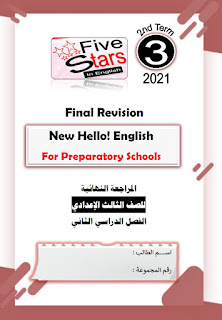How to teach new vocabulary
Teaching New Vocabulary
One
important decision we have to make before teaching new words is whether we are
teaching vocabulary terms for: active use or understanding. Vocabulary
items which are taught for passive understanding are those the Ss.
will recognize and understand but not necessarily use for communication, e.g.
when the teacher gives instructions for Ss. to get in groups or pairs.
But vocabulary items that are taught for active use are
those teachers expect their Ss. to understand, pronounce correctly, read, write
and use properly in communication.
Steps in teaching a new word:
1- Pronounce the word 2 or
3 times while the Ss. listen.
2- Show the meaning of a
word by using suitable technique.
3- Have Ss. to repeat the
word after you (in chorus, groups and individually )
4- Write the word of the
board and have your ps. read and copy it.
5- Ask questions for
comprehension.
6- Encourage ps to use the
word themselves.
Techniques for teaching the meaning of new words:
1- Context:
A) Simple statements: if we want to
present the word clothes we can use a simple sentence e.g. Galabeyas
and shirts are clothes.
B) Imagined examples: We use it when it is
difficult to use simple statements.
For example the word "
naughty " e.g. Hany is naughty. He hits the cats and chases the
birds. He is naughty.
2- Description:
To show the meaning of a
word like bedroom we can use definition by using simple words
e.g. "The bedroom is the place where we sleep".
3- Real objects ( Realia ):
Through the concrete
things in the classroom such as books, pens, tables, windows and chairs.
4- Board drawings:
We can present words
through simple drawings e.g. circle.
5- Miming ( Action ):
This works well in
teaching action verbs such as run, walk, laugh, smile, eat, jump, sleep, sit,
stand, open, write, drink, etc.
6- Equivalent ( Synonyms ):
By giving synonymous word
which has to be familiar to the Ss or it will be a problem and will be of no
help to them e.g. ancient = old.
7- Opposites ( Antonyms ) :
By giving the previous
learned antonym e.g. happy ×sad.
8- Pictures:
Whether a photograph or a
drawing e.g. a picture of a house.
9- Wall charts:
They are valuable because
they present vocab in a visual context as long as, they are clearly visible
e.g. a wall chart for a street where there are shops, traffic lights, mosque,
policeman … etc.
10- Scales:
When we want to show the
difference between words of the same group e.g.
never rarely sometimes often always
0% ........................................................................ 100%
11- Arabic translation:
In presenting abstract words, if other techniques are ineffective
we can use Arabic equivalent of this words.
To support me to continue, You can contribute to my account.

تعليقات
إرسال تعليق